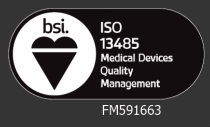Central to the new guidelines are new recommendations for:
cleaning verification tests as part of manual cleaning;
mechanical cleaning and disinfection in place of manual cleaning and disinfection;
and the storage of flexible endoscopes in a drying cabinet.
According to the AORN " the collective evidence shows that mechanical processing improves cleanliness, increases efficiency, minimizes personal exposure to biohazardous materials, and can be more successfully monitored for quality and consistency."
Additionally, "The collective evidence shows that optimal storage of flexible endoscopes facilitates drying, decreases the potential for contaminations, and provides protection from environmental contaminants."
These guidelines represent a significant step forward in patient and worker safety as well as providing tremendous opportunites for increased efficiencies in the reprocessing of flexible endoscopes.
ARC's endoscope cleaning station and drying cabinets are the ideal solution for every health care institutions' response to the new guidelines.

 RSS Feed
RSS Feed
